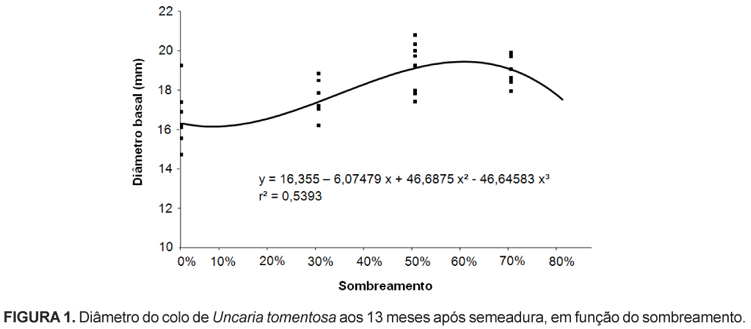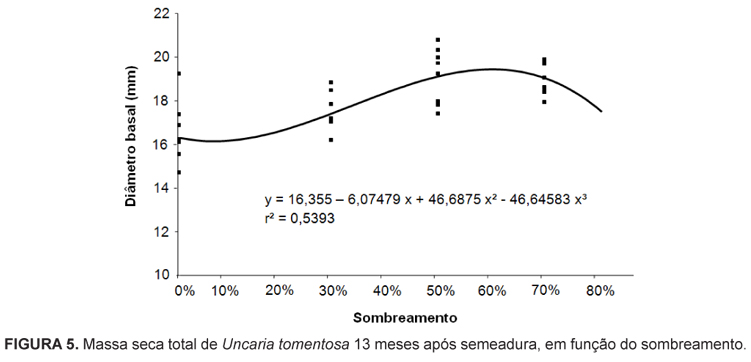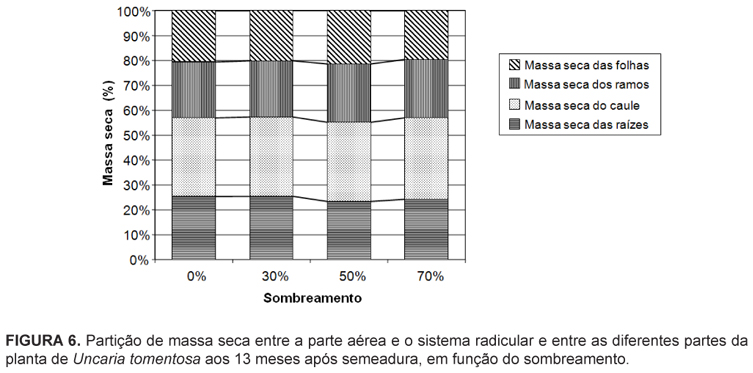Is one among many plant species with medicinal properties, used by the native communities of the Amazon to treat several diseases. Its numerous medicinal properties have caused in recent years an increase in demand and the plant has been exploited in an indiscriminate and predatory way. The agronomic knowledge available on this species is scarce, so the purpose of this study was to evaluate the effect of different levels of shading on early growth of Uncaria tomentosa. The experiment was established in the nursery of Embrapa Acre, in the city of Rio Branco, state of Acre, Brazil, from May 2009 to June 2010. We tested four levels of shading (30%, 50% and 70%) and full sunlight, obtained with black shade screens. The experimental design was a randomized block, with eight replications and two plants per plot. The variables analyzed were: height of shoots, stem diameter, root dry matter, aerial dry matter, total dry matter and dry matter partitioning. The growth of Uncaria tomentosa was modified by the intensity of shading. Plant height and dry weight of the roots increased linearly with the intensity of shading. Shading around 55 to 60% provided better growth for the stem diameter, shoot dry matter and total dry matter. There was no change in the distribution of the dry matter between the shoot and root systems of the plants. For the species Uncaria tomentosa, we found that shading in the range of 55 to 60% is the most indicated for its early growth.
Amazon; medicinal plant; solar radiation






